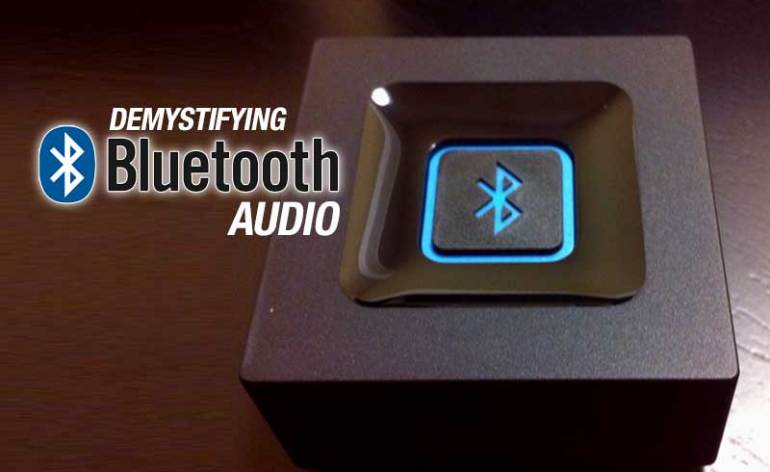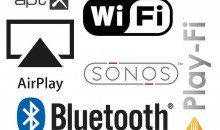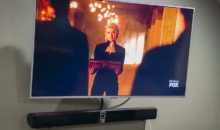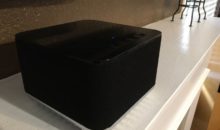Bluetooth Audio – What You Need to Know
Something great is happening with wireless audio, desktop speakers, and even portable products like wireless headphones and speakers. Bluetooth audio has gone from a “nice to have” feature into something that is almost mandatory for any new product. Even entry-level AV receivers are coming with Bluetooth so they can stream music from your computer or smartphone. All Bluetooth, however, is not the same, so it’s good to understand the format so you’re ensuring you have the features and performance you need. There have, in fact, been 12 iterations (so far) of Bluetooth, beginning with v1.0 and culminating in the latest (as of 2021) v5.2.
Bluetooth Audio Range
While many companies would have you believe that Bluetooth can reach distances of 200m (the current rating for Bluetooth 5.2), the reality is that you’re lucky to get 30-40 feet in a normal indoor or outdoor environment. The 800+ foot ratings are likely achieved under very favorable circumstances…like in a very reflective room…with no furniture…or people…or air…you get the idea.
Real-world Bluetooth range is determined by the following (note this and improve your chances of achieving a great range in your situation):
- Power of the receiver/transmitter
- Whether you’re transmitting through walls
- Interfering furniture or objects between the transmitting source and the Bluetooth receiving device
- The version of Bluetooth used in both devices
- Speed typically decreases over distance
Bluetooth Audio Quality
The quality of Bluetooth audio was atrocious in the beginning. And why not, since the format was designed for pairing of input devices, not audio transmission. Still, Bluetooth v1.2 began to think about the audio capabilities by implementing Extended Synchronous Connections (eSCO). This improved the voice quality of audio links by allowing retransmissions of corrupted packets. It also served to increase audio latency to provide better concurrent data transfer. Bluetooth v4.0 introduced improvements to the audio Host Controller Interface and to the High Speed (802.11) Protocol Adaptation Layer. Bluetooth 4.1 saw further audio improvements with audio architecture updates for wideband speech.
About the time Bluetooth v4.0 arrived on the scene, aptX began to make its way into portable devices. AptX is an audio codec that allows real-time streaming of high-quality stereo audio over the Bluetooth A2DP connection. In order for aptX to work, the technology needs to be present in both the transmitter and the receiver.
Now, since Bluetooth 5.0, we’ve seen increased range (from 30m to 200m), reduced power consumption, increased throughput (up to 1400kbps, and increased message capacity (from 31 bytes to 255 bytes). Bluetooth 5.0 and later also introduced more Internet of Things compatibility so that they can work together more easily allowing for single devices to pair with multiple other devices.
Bluetooth Pairing
Bluetooth v2.1 changed pairing for Bluetooth forever, introducing Secure Simple Pairing. Legacy pairing is what is used in Bluetooth 2.0 and earlier devices and consists of a method whereby each device must enter/use the same PIN code. It was a royal pain and—while fine for keyboards, mice, and other one-time-only connections, its use in Bluetooth audio was atrocious at best. It was so inconvenient, in fact, that most devices simply hard-coded “0000” or “1234” into their systems.
Secure Simple Pairing (SSP) is a new method required by devices using Bluetooth v2.1 or later. Bluetooth devices can also use legacy pairing to make them compatible with devices still using legacy pairing. Secure Simple Pairing, for lack of a better description, just works. No user interaction is required except that some devices may prompt a user to confirm the pairing process. Passkey Entry is another method that is permitted, which allows a device with a display and a device with a numeric keypad (like a keyboard) to pair via a 6-digit numeric code.
Out of band (OOB) pairing is yet another method that uses Near Field Communication (NFC) to pair devices automatically using the Bluetooth radio. This NFC lets you pair two devices simply by allowing them to get close to each other.
Bluetooth Fun Facts
- The name “Bluetooth” comes from a Danish King named Harald Blåtand (Harold Bluetooth in English) who ruled in the 10th century.
- Mobile phones, FM radio, TVs, and Bluetooth all use radio (RF) waves to send information wirelessly. Bluetooth technology simply transmits those waves over shorter distances.
- Bluetooth was developed in 1994 by engineers at Ericsson, a Swedish telecommunications company.
- In 1998 Bluetooth was endorsed by 5 Promoter companies, including Ericsson, Intel, Nokia, Toshiba, and IBM.
- Bluetooth is not owned by any one company, thus multiple organizations and companies in the Bluetooth Special Interest Group (SIG)—see above—work to improve and maintain the format.
- Bluetooth technology works in the unlicensed industrial, scientific, and medical (ISM) band (2.4 GHz to 2.485 GHz). It uses a spread spectrum, frequency hopping, full-duplex signal at a nominal rate of 1600 hops/sec.
- The 2.4 GHz ISM band is available (and unlicensed) in most countries.







I am looking for a Bluetooth transmitter to work with Visio video display . There seems to be a problem with audio streaming latency. What can I do to sync the audio to the video? Is there a new product or different technology to address this prob!em? I assume the Visio has line level output with av jacks
Apt-X does not guarantee any serious audio quality simply because the bitrates supported are far too low.
Nothing is a guarantee—but it’s a step in the right direction.
I have blue tooth audio on VW Golf Head unit .How can I pair it with my Samsung A-50 Smart phone .Thank you.